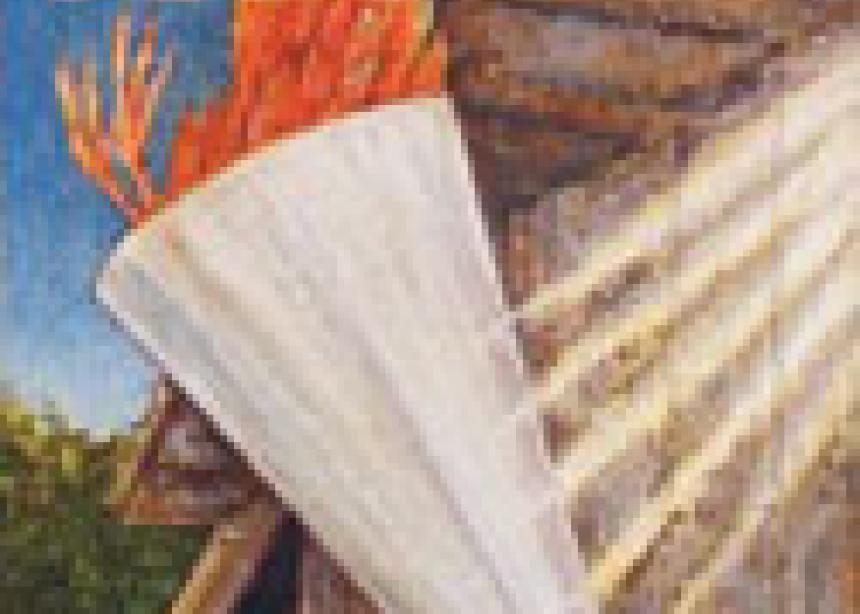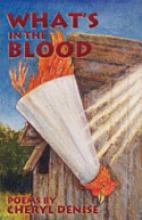We Mennonites are not going to run out of stories anytime soon!
How could we, after the resplendent feast of Mennonite creative writing enjoyed by 170 of us in Virginia’s Shenandoah Valley over Palm Sunday weekend at the “Mennonite/s Writing VI: Solos and harmonies” event hosted by Eastern Mennonite University.
Best described as a festival, organizer Kirsten Eve Beachey called these periodic conferences “the gathering place for the virtual community of Mennonite writers” who identify by birth or choice. The Canadian presence and influence “on stage” was huge. One American hinted at an “occupation by Canada.”
The first “Mennonite/s Writing” conference came into being in 1990 as the brain child of Hildi Froese Tiessen of Conrad Grebel University College, and her passionate influence continues.
I basked in the wonderful writing that continues to emerge, with stories and poetic reflections from so many kernels of experience. In “People Who Understand,” Kristen Mathies, a writer from Kitchener, Ont., delicately explored intercultural relationships in a story set in New York City and Swaziland, both places where she has lived. Rudy Wiebe overwhelmed us with passion as he read “Broken Arrow,” his story about a 19th-century peacemaking Cree leader (Collected Stories, 1955-2010, University of Alberta, 2011). In contrast, Dora Dueck read gently from her novel This Hidden Thing (CMU Press, 2010), the story of a Mennonite domestic in Winnipeg in the 1920s.
It was a special treat for me to hear Cheryl Denise, who grew up Swiss Mennonite in Elmira, Ont., read from her new poetry collection, What’s in the Blood (Cascadia, 2012). The values and choices of her Old Order great-grandparents continue to spark her poetic reflection, as do her childhood experiences at Elmira Mennonite Church.
It would have been more than enough to see Vern Thiessen, one of Canada’s most prolific playwrights, perform his own one-person play, Back to Berlin. “Every play,” said Thiessen post-performance, “should pose a good question.” He based his play in the story of accompanying his elderly father, a post-World War II immigrant, back to Berlin, where he spent the war years as a courier. The play poses the questions: What did the father actually do during the war? How much did he know? The son both wants to find out, and doesn’t. Thiessen masterfully plays father, son and narrator in this gripping exploration lightened by humour.
It would have been enough to think about new dimensions of novels I’ve read through academic papers, such as Daniel Shank Cruz’s study of Miriam Toews’ comic novel, Summer of My Amazing Luck (Turnstone Press, 1996). Cruz referred to this novel as “narrative ethics,” a more “cheerful” way of teaching ethics than the Martyrs Mirror of his youth. The novel draws much better attention to the difficulties of being a welfare mother than a CBC documentary. Mennonites can read an “extra layer” into it about how to live, how to be compassionate. Texts like this can provide safe ground for secular and religious Mennonites to dialogue, Cruz said.
Ah yes . . . secular and religious Mennonites. In her state of the art address concerning Canadian Mennonite literature, Froese Tiessen asked, “Who is the self in Mennonite garb? And to whom or where does the writing go?”
She noted that Mennonite literature is prominent in the Canadian writing scene, and that it has been produced and received as ethnic writing, part of the Canadian government’s multiculturalism emphasis of the 1970s and ’80s. Now, Froese Tiessen posited, “Mennonite writers” locate themselves in the worldly present and most of their Mennonite readers are in the same place. So we are left with “tracings . . . what remains of what doesn’t remain . . . the absent present,” as Mennonite writing becomes more mainstream.
The familiar conversation popped up at various points about there being writers who self-identify as “cultural Mennonites,” those who are “religious Mennonites,” and those who are both. Winnipeg writer David Elias danced around these themes playfully and provocatively in his reflection, “If I am a Mennonite writer.” When being part of a collective consciousness, said Elias, one can’t always easily decide whether to swim upstream or down.
I would love to see Canadian Mennonite creative writing blossom in the many ethnicities that now make up Mennonite Church Canada. Yet at the same time I celebrate the 50 years of Canadian Mennonite writing so evident at this conference.
Froese Tiessen noted, “Each of the six conferences since 1990 has had a distinctive feeling. This one . . . offered an unusually rich and invigorating range of new and old voices, visions, and sensibilities among writers and literary critics alike. While recognizing substantial diversities, everyone involved [expressed] a common urgency to support creative writing among Mennonites.”
I took home with me not only the formal presentations, but also the joy of connections made with former professors, distant cousins who write or publish books, memoir writers I’d like to emulate, and other appreciative readers.
Sue Clemmer Steiner, Waterloo, Ont., is an appreciative reader of Mennonite creative writing.




Add new comment
Canadian Mennonite invites comments and encourages constructive discussion about our content. Actual full names (first and last) are required. Comments are moderated and may be edited. They will not appear online until approved and will be posted during business hours. Some comments may be reproduced in print.